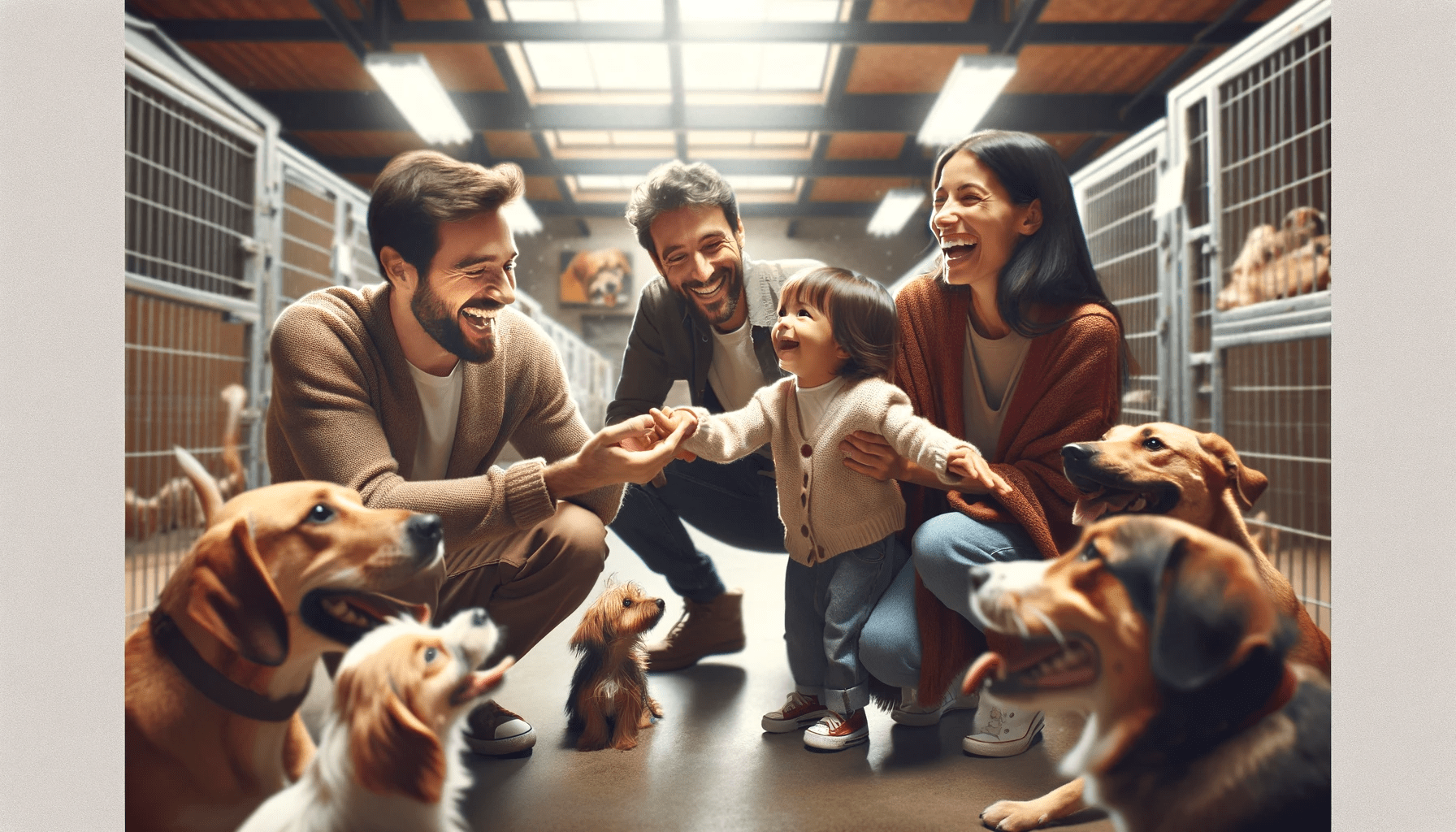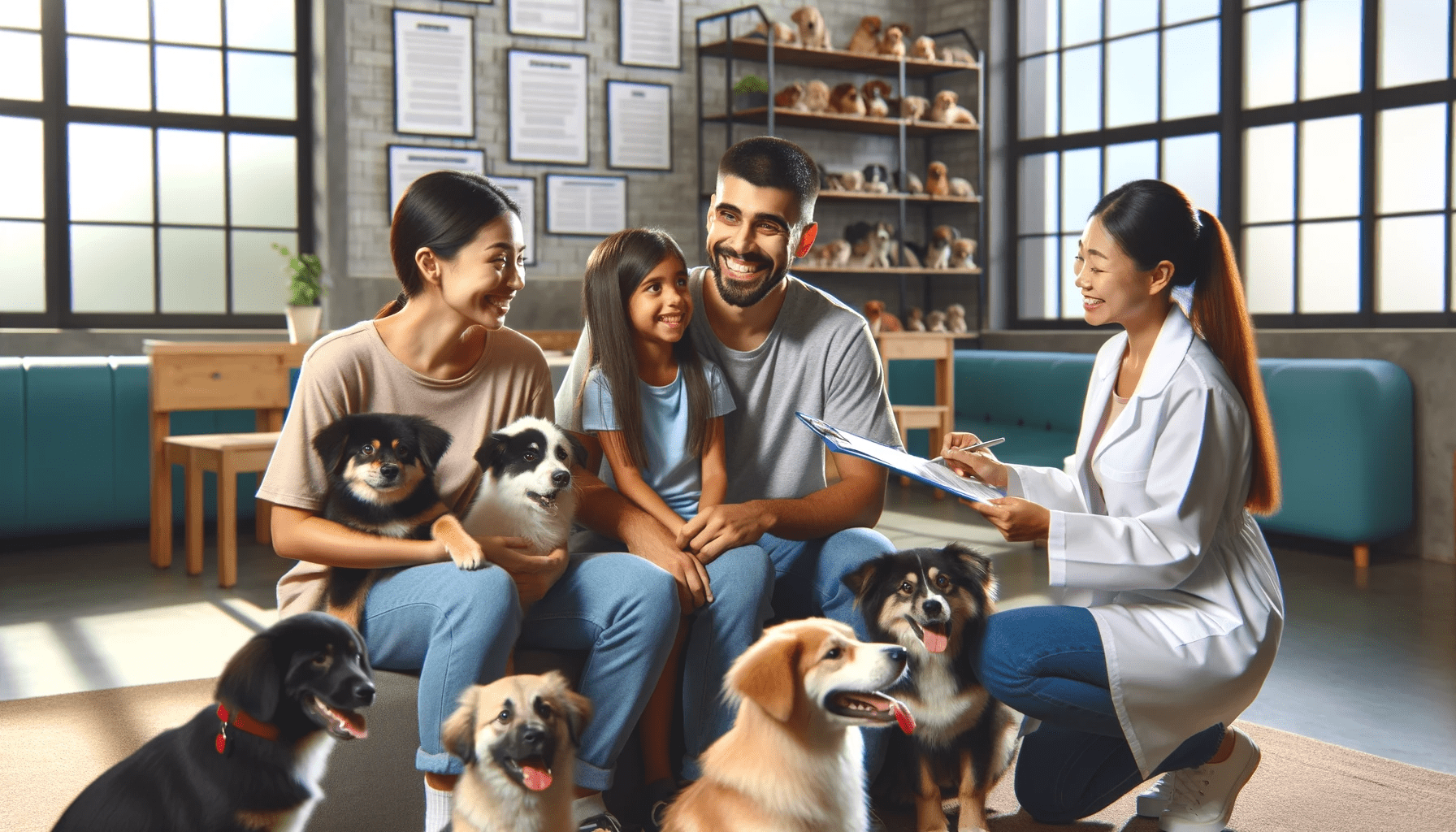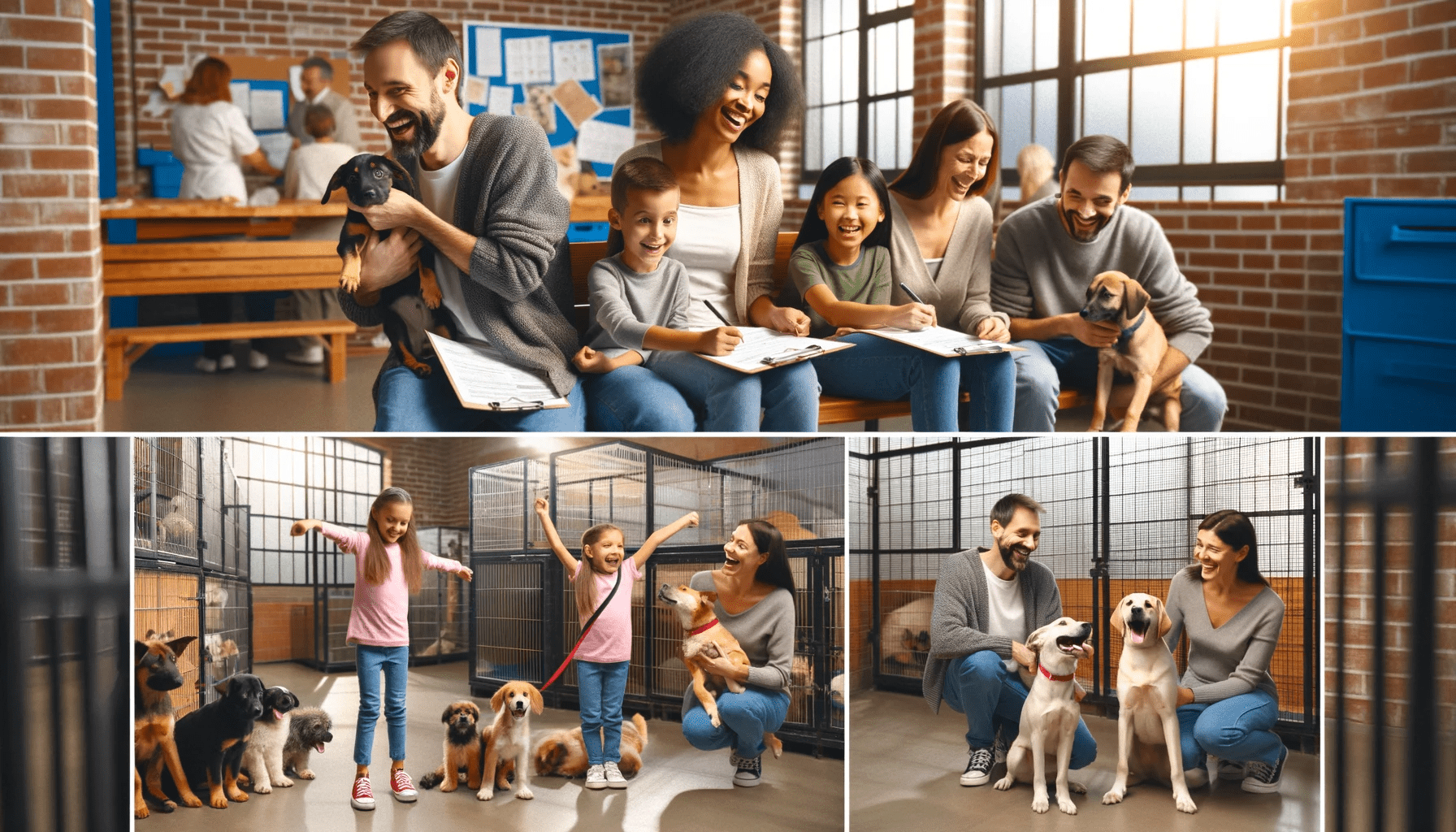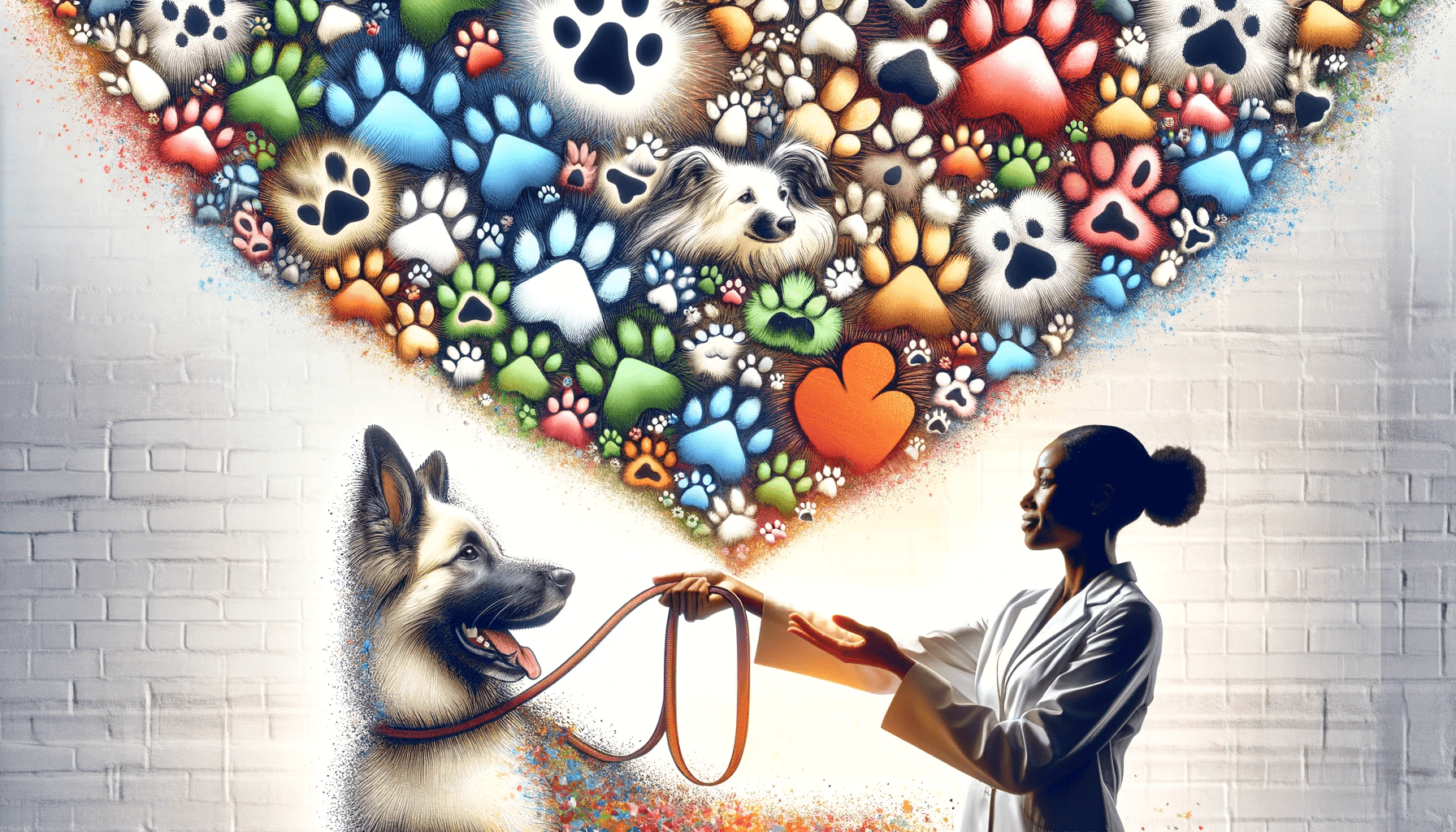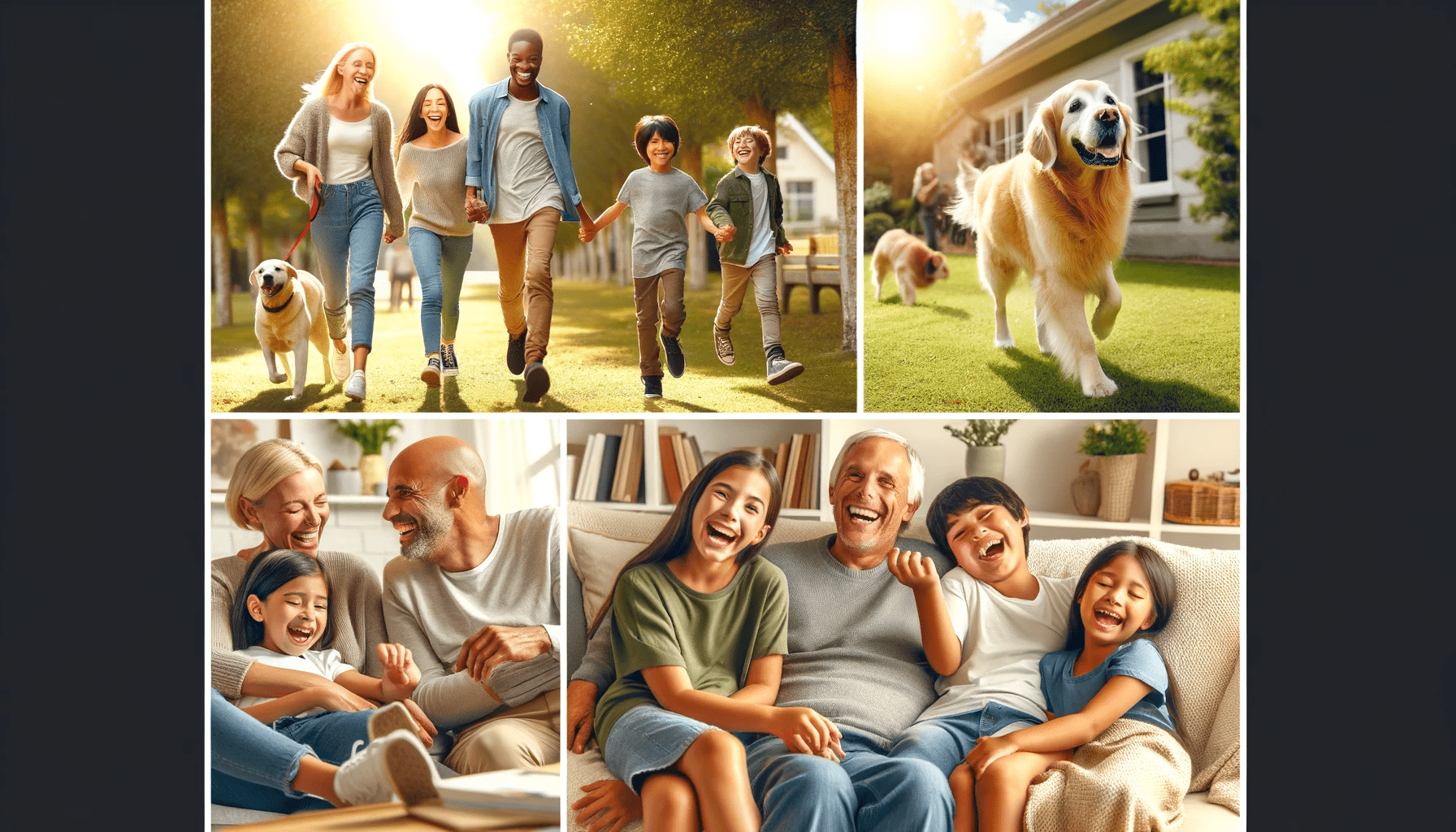Are you ready to bring a new furry friend into your home? Welcoming a new dog can be an exciting and rewarding experience, but it's important to be prepared.
In this article, we'll guide you through the essential steps for a smooth transition. From finding the perfect match to puppy-proofing your living space, we've got you covered.
Get ready to create a loving and comfortable environment for your new best friend. Let's dive in!
Key Takeaways
- Conduct breed research to find a dog that aligns with your lifestyle and preferences
- Prepare your home environment by removing potential hazards and creating a cozy space
- Puppy-proof your living space by removing delicate items and securing dangerous items
- Set up a comfortable sleeping area with a suitable bed and cozy blankets
Finding the Perfect Match
To find the perfect match, you should consider adopting a dog that aligns with your lifestyle and preferences. Dog adoption is a wonderful way to bring a new furry friend into your life, but it's important to do some breed research beforehand. Understanding the characteristics and needs of different breeds will help you make an informed decision and ensure a successful match.
Start by thinking about your lifestyle. Are you an active person who enjoys outdoor activities? If so, a high-energy breed like a Border Collie or a Labrador Retriever might be a good fit for you. On the other hand, if you prefer a more relaxed lifestyle, a smaller breed like a Cavalier King Charles Spaniel or a Shih Tzu might be more suitable.
Next, consider your living situation. Do you live in a small apartment or a house with a large backyard? Some breeds are better suited for apartment living, while others thrive in homes with plenty of space to run and play.
It's also important to think about your experience level with dogs. If you're a first-time dog owner, you may want to consider a breed that's known for being friendly, easy to train, and low-maintenance.
Preparing Your Home Environment
Get your home ready for your new dog by creating a safe and welcoming environment. Preparing for adoption involves more than just bringing a new furry friend into your home. It's important to ensure that your home is a safe space for your new companion.
Begin by doing a thorough sweep of your home to identify any potential hazards. Look for loose wires, toxic plants, or any small objects that could be easily swallowed. Consider investing in baby gates to block off areas that may be off-limits to your dog. Secure any loose furniture or items that could topple over and cause injuries.
Next, create a cozy space for your dog to relax in. Set up a comfortable bed or blanket in a quiet corner of your home where they can retreat to when they need some alone time. Make sure to provide fresh water and food in easily accessible areas.
To prevent accidents, it's crucial to establish a potty area for your new dog. Decide whether you want to train them to go outside or use indoor pee pads. Whichever method you choose, be consistent and patient during the training process.
Finally, gather all the necessary supplies such as food bowls, toys, grooming tools, and a leash. Having everything ready beforehand will make the transition smoother for both you and your new dog.
Puppy-Proofing Your Living Space
Ensure the safety of your new puppy by thoroughly puppy-proofing your living space. Before bringing your furry friend home, it's important to make your living space as dog-friendly as possible. Start by evaluating your furniture and removing any delicate or valuable items that could be easily damaged. Opt for sturdy, pet-friendly furniture that can withstand scratching and chewing. This won't only protect your belongings but also keep your puppy safe from potential hazards.
Next, focus on choosing the right chew toys for your new puppy. Puppies have a natural instinct to chew, and providing them with appropriate toys can help redirect their chewing behavior away from your furniture and belongings. Look for toys made from durable materials, such as rubber or nylon, that are specifically designed for teething puppies. Avoid toys that are too small or have small parts that can be easily swallowed.
In addition to furniture and chew toys, it's crucial to secure any potentially dangerous items, such as electrical cords, household chemicals, and plants that may be toxic to dogs. Keep these items out of your puppy's reach or store them in locked cabinets or drawers. Invest in baby gates to block off areas that are off-limits to your furry friend.
Setting Up a Comfortable Sleeping Area
Now that you've puppy-proofed your living space, it's time to focus on setting up a comfortable sleeping area for your new dog.
When it comes to bedding options, there are a few choices to consider. From cozy dog beds to soft blankets, creating a cozy space for your furry friend is essential for a good night's sleep.
Bedding Options for Dogs
What are the best bedding options to provide a comfortable sleeping area for your new dog? Choosing the right size and material for your dog's bed is crucial for their comfort and overall well-being. Here are some options to consider:
- Size: Ensure the bed is large enough for your dog to stretch out comfortably. Measure your dog from nose to tail and add a few inches for extra space.
- Material: Opt for a bed made of durable and hypoallergenic materials, such as memory foam or orthopedic foam, which provide support for your dog's joints. Avoid beds with stuffing that can be easily torn apart.
- Regular Cleaning: Regularly clean your dog's bed to maintain hygiene and prevent odors. Choose a bed with a removable cover that can be easily washed. Use pet-safe detergents and wash at least once a month.
Creating a Cozy Space
To provide your new dog with a comfortable sleeping area, start by setting up a cozy space using blankets and pillows. A cozy dog bed is a great option for creating a soft and inviting spot for your furry friend to rest. Choose a bed that suits your dog's size and breed, ensuring there's enough room for them to stretch out comfortably.
If you prefer using a dog crate, add a soft blanket or cushion to make it cozy and inviting. Dogs often seek out enclosed spaces, so a crate can provide a sense of security and comfort.
Remember to place the sleeping area in a quiet and peaceful corner of your home to minimize disturbances and allow your dog to relax and sleep soundly.
Stocking Up on Essential Supplies
Make sure you have all the necessary supplies for welcoming your new dog into your home. It's important to be prepared so that your furry friend feels comfortable and settled right from the start. Here are some essential items you'll need:
- Dog Food: Providing your new dog with a balanced and nutritious diet is crucial for their overall health and well-being. Make sure to choose a high-quality dog food that meets their specific dietary needs.
- Training Treats: Training your new dog is an essential part of their integration into your home. Having a supply of tasty training treats will make the process more enjoyable for both of you. Look for treats that are small, soft, and easily digestible.
- Leash and Collar: A sturdy leash and collar are essential for taking your dog on walks and ensuring their safety. Opt for a leash that's comfortable to hold and a collar that fits properly without being too tight or too loose.
- Food and Water Bowls: Invest in durable, non-slip food and water bowls that are easy to clean. Stainless steel or ceramic bowls are excellent options as they're hygienic and long-lasting.
- Dog Bed: Providing your dog with a cozy and comfortable bed is important for them to have a designated space of their own. Choose a bed that's the right size for your dog and made with materials that are easy to clean.
- Toys: Dogs love to play, so having a variety of toys is essential for keeping them entertained and mentally stimulated. Include toys that are suitable for chewing, fetching, and interactive play.
Establishing a Routine and Schedule
Creating a consistent routine and schedule is essential for helping your new dog adjust and thrive in their new home. Dogs thrive on structure and knowing what to expect each day. By establishing a routine, you can provide your dog with a sense of security and help them settle into their new environment more easily.
One important aspect of establishing a routine is setting regular meal times. Determine how many meals your dog needs each day and stick to a consistent feeding schedule. This won't only help with their digestion but also make house training easier.
In addition to meal times, it's important to incorporate daily exercise into your dog's routine. Dogs need regular physical activity to stay healthy and happy. Take your dog for walks or engage in playtime activities like fetch or tug-of-war. Not only will this help them burn off energy, but it will also provide mental stimulation.
When it comes to training, consistency is key. Set aside specific times each day for training sessions. Use positive reinforcement techniques to reward good behavior and correct any unwanted behavior. Consistency in training will help your dog understand what's expected of them and reinforce good habits.
Introducing Your New Dog to Family and Friends
Now that you have welcomed a new dog into your home, it's important to introduce them to your family and friends.
Socializing your new dog is crucial for their development and overall well-being.
Managing the initial interactions with your loved ones will help create a positive and harmonious environment for everyone involved.
Socializing Your New Dog
Introduce your new dog to family and friends by organizing socialization outings and playdates. This is an essential step in their training and behavior development. Here are some tips to make the introductions go smoothly:
- Start with one-on-one interactions: Allow your new dog to meet each family member or friend separately, in a calm and controlled environment. This will help them feel more comfortable and build positive associations.
- Gradually increase the group size: Once your dog is comfortable with individual interactions, slowly introduce them to larger groups of people. Take it step by step, ensuring that your dog is relaxed and not overwhelmed.
- Encourage positive experiences: Provide treats and praise when your dog interacts well with family and friends. This will reinforce good behavior and help them associate socializing with positive outcomes.
Managing Initial Interactions
How can you effectively introduce your new dog to family and friends? Managing the initial interactions is crucial to ensure a smooth transition for your new furry friend.
When introducing your new dog to your current pets, it's important to do so in a controlled and supervised environment. Start by introducing them in a neutral space, such as a park or a backyard. Allow them to sniff each other and get acquainted. Make sure to monitor their body language and intervene if any signs of aggression or discomfort arise. Gradually increase the duration of their interactions, always providing positive reinforcement and treats.
When introducing your new dog to family and friends, it's essential to set boundaries and establish rules. Encourage calm and gentle interactions, and remind everyone to respect the dog's personal space.
Frequently Asked Questions
How Do I Choose the Right Type of Dog Food for My New Dog?
To choose the right type of dog food for your new furry friend, consider their nutritional requirements. Look for options that meet their specific needs, such as age, breed, and any dietary restrictions. Proper nutrition is essential for their overall health and well-being.
What Should I Do if My New Dog Is Exhibiting Aggressive Behavior?
If your new dog is exhibiting aggressive behavior, it's important to address it promptly. Start by implementing socialization techniques and positive training methods to help them learn appropriate behavior and build trust with you.
How Can I Help My New Dog Adjust to Being Left Alone During the Day?
To make your new dog feel comfortable when alone, try these tips for preventing separation anxiety: gradually increase alone time, provide a safe space, leave stimulating toys, and establish a consistent routine.
What Is the Best Way to Potty Train My New Dog?
To potty train your new dog effectively, start with consistent routines, positive reinforcement, and frequent bathroom breaks. Remember to praise and reward your dog when they go outside, and be patient as accidents can happen during training.
Are There Any Specific Training Techniques I Should Use When Teaching My New Dog Basic Commands?
When teaching your new dog basic commands, it's important to use effective training techniques. This will not only help them learn but also strengthen the bond between you. Here are some practical tips to get you started.
Conclusion
Now that you have taken these essential steps to welcome your new dog, you're ready to embark on an exciting journey filled with love and companionship.
Remember to be patient and understanding as your new furry friend adjusts to their new home.
With a well-prepared environment, a routine in place, and a loving family by their side, your new dog will surely feel safe, happy, and loved.
Enjoy this new chapter together and create lasting memories!

